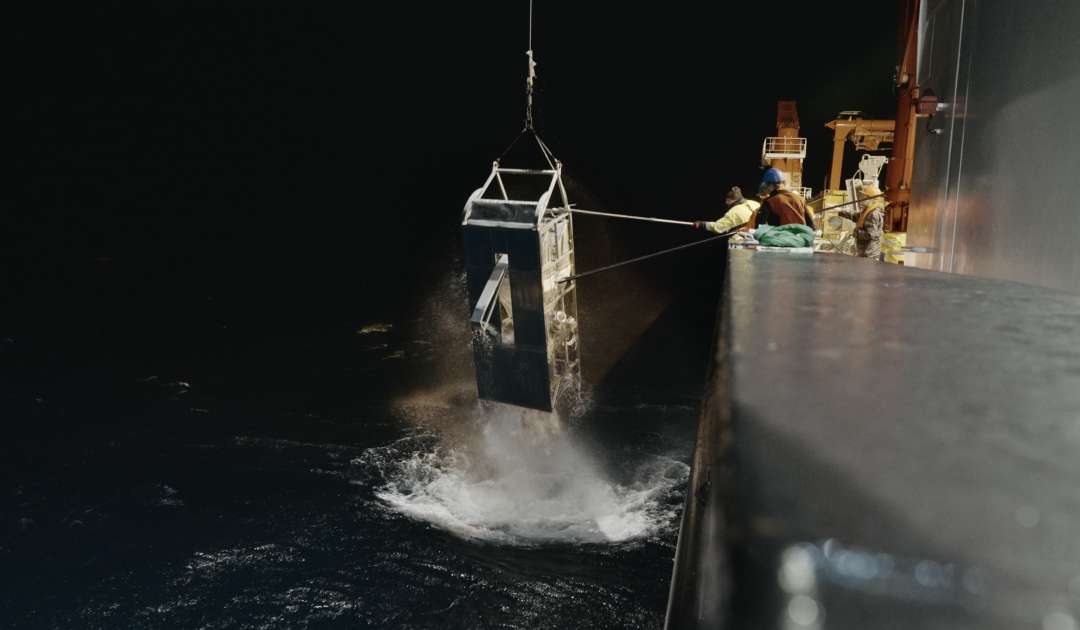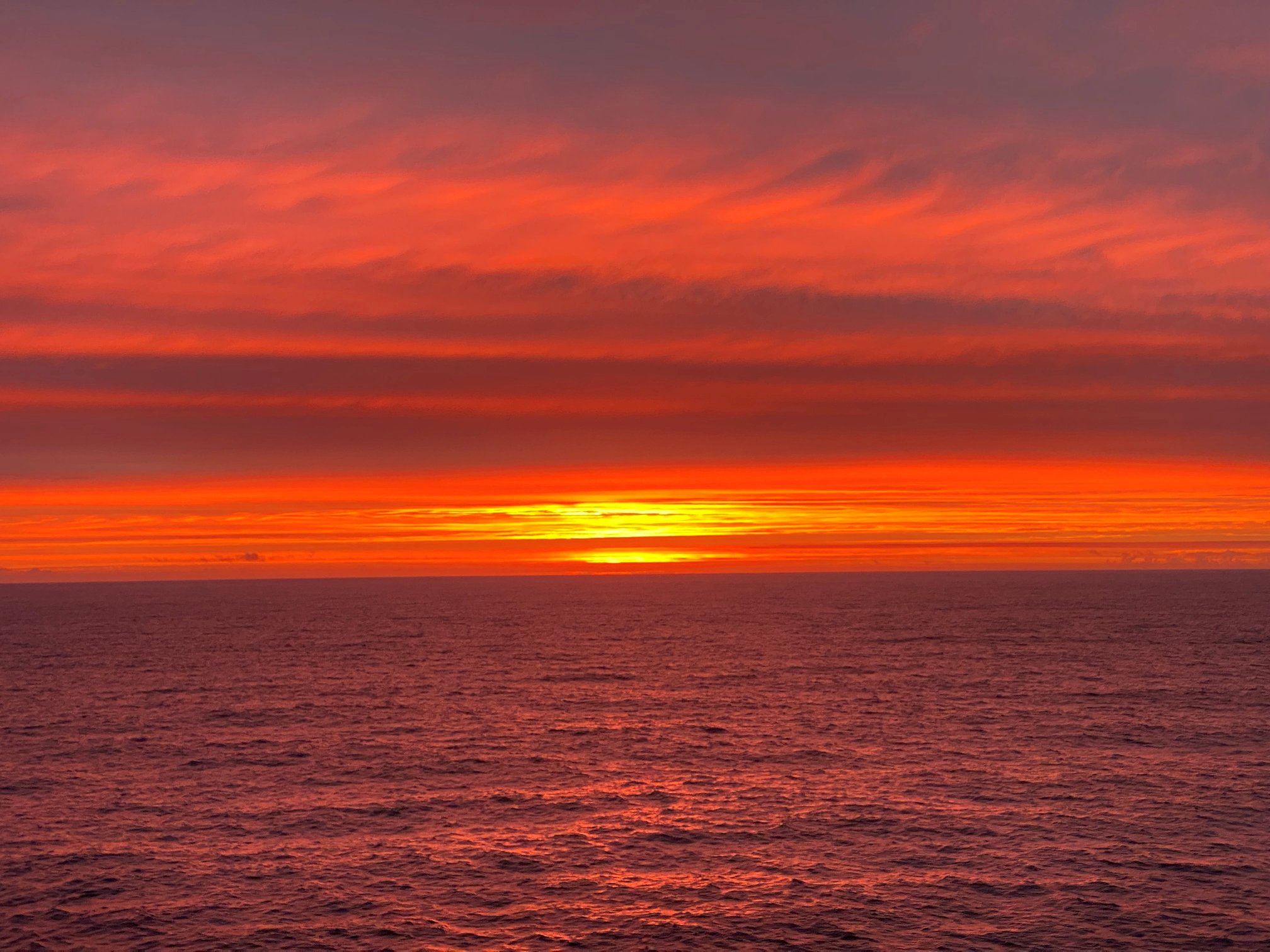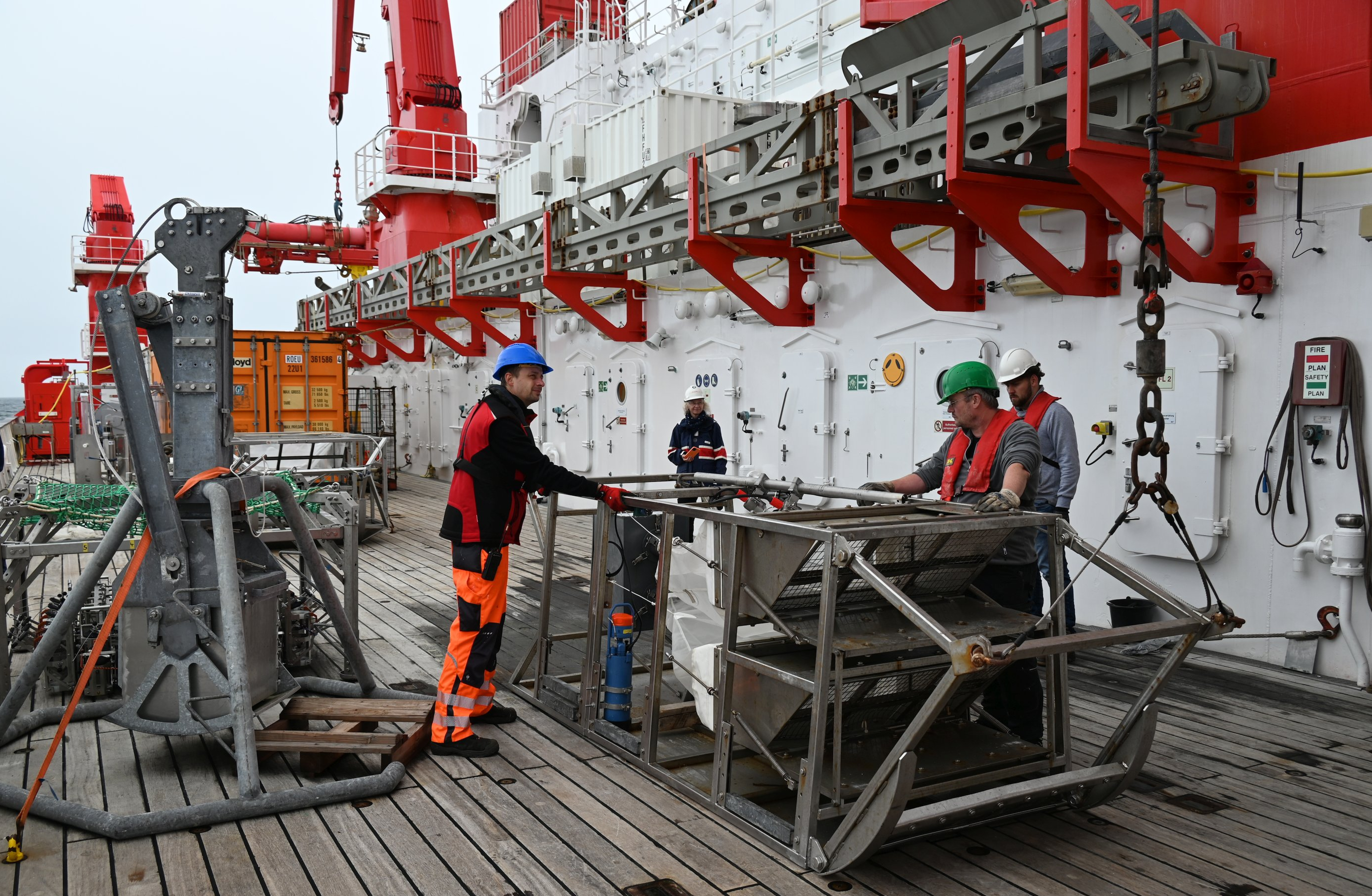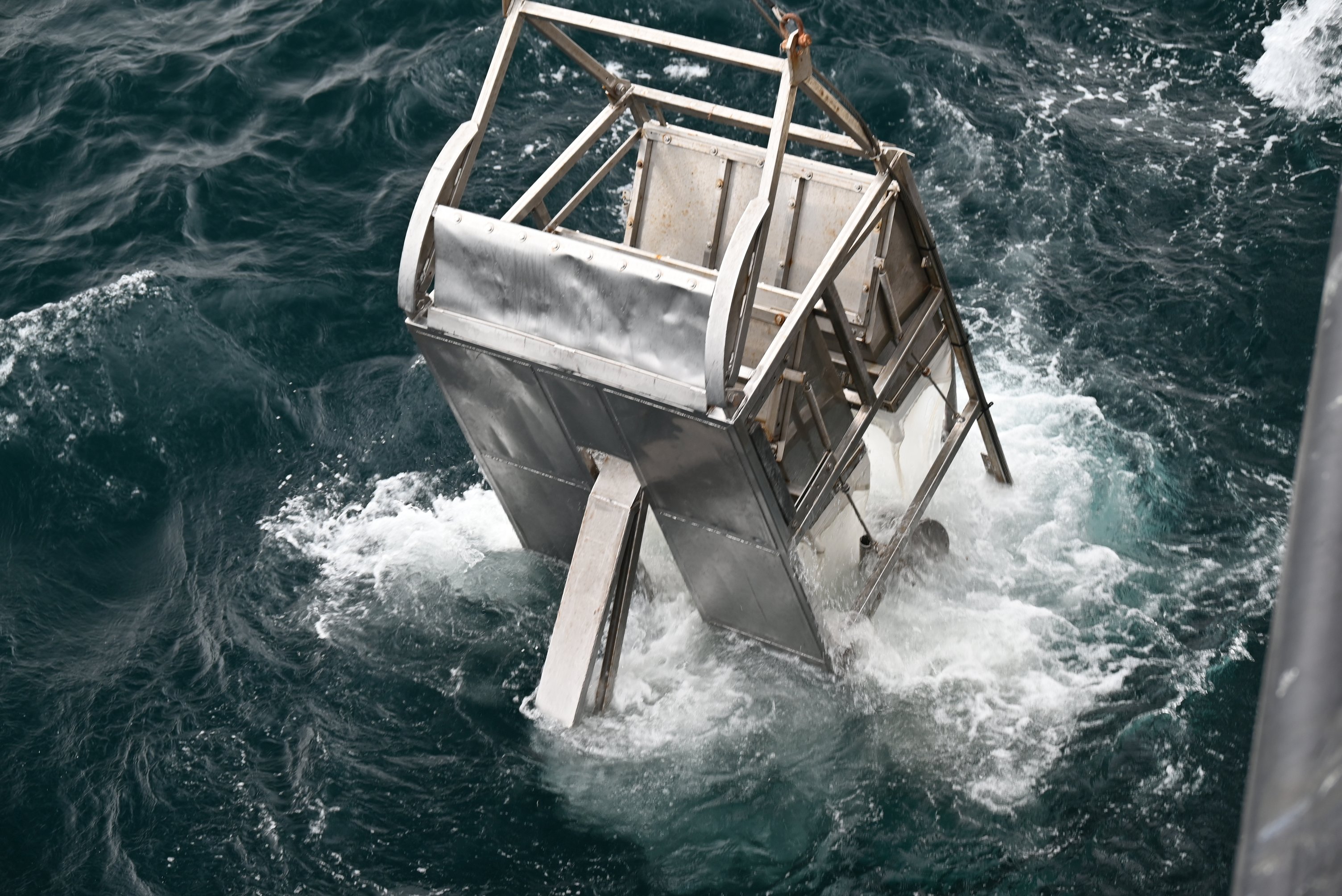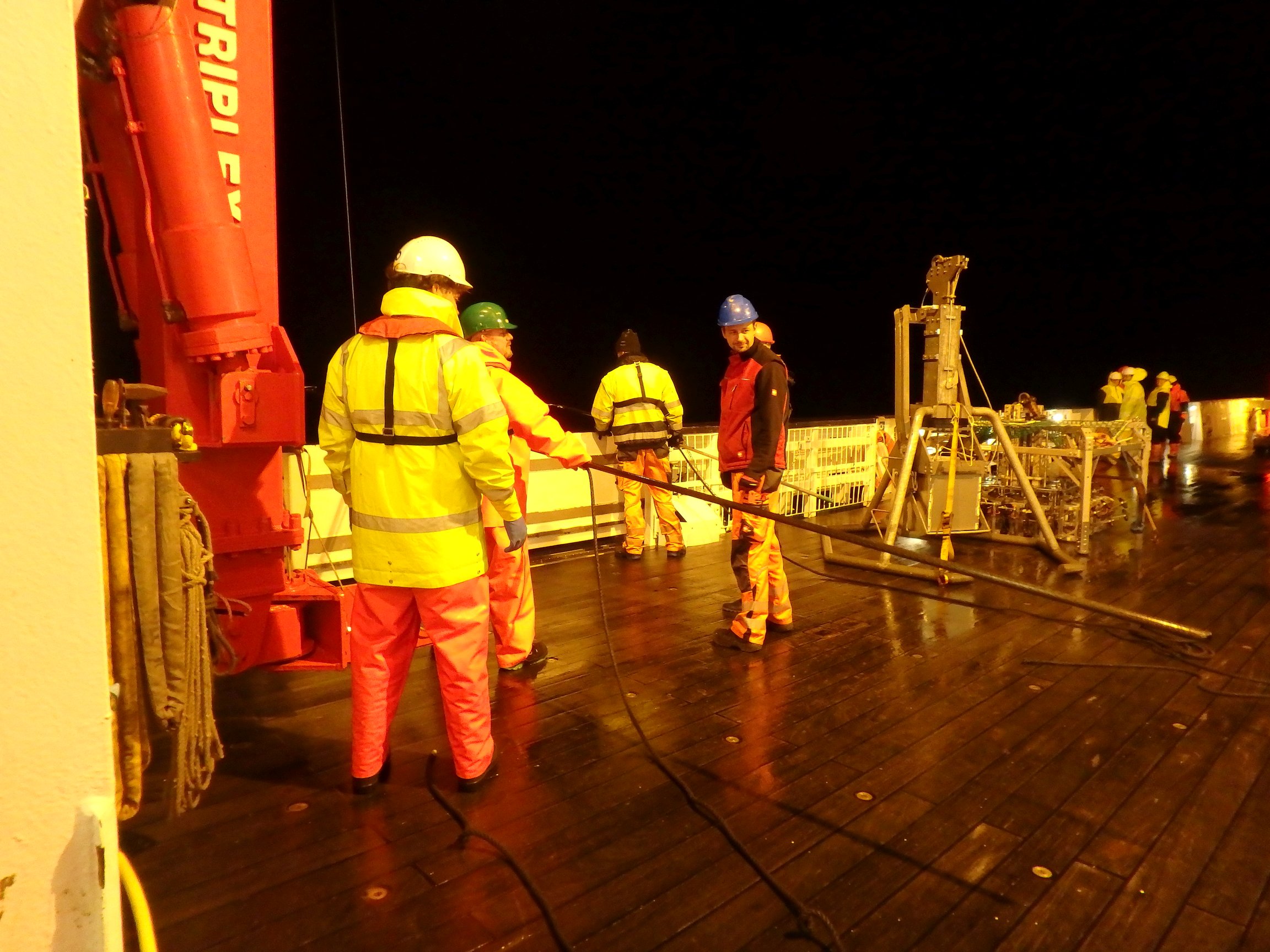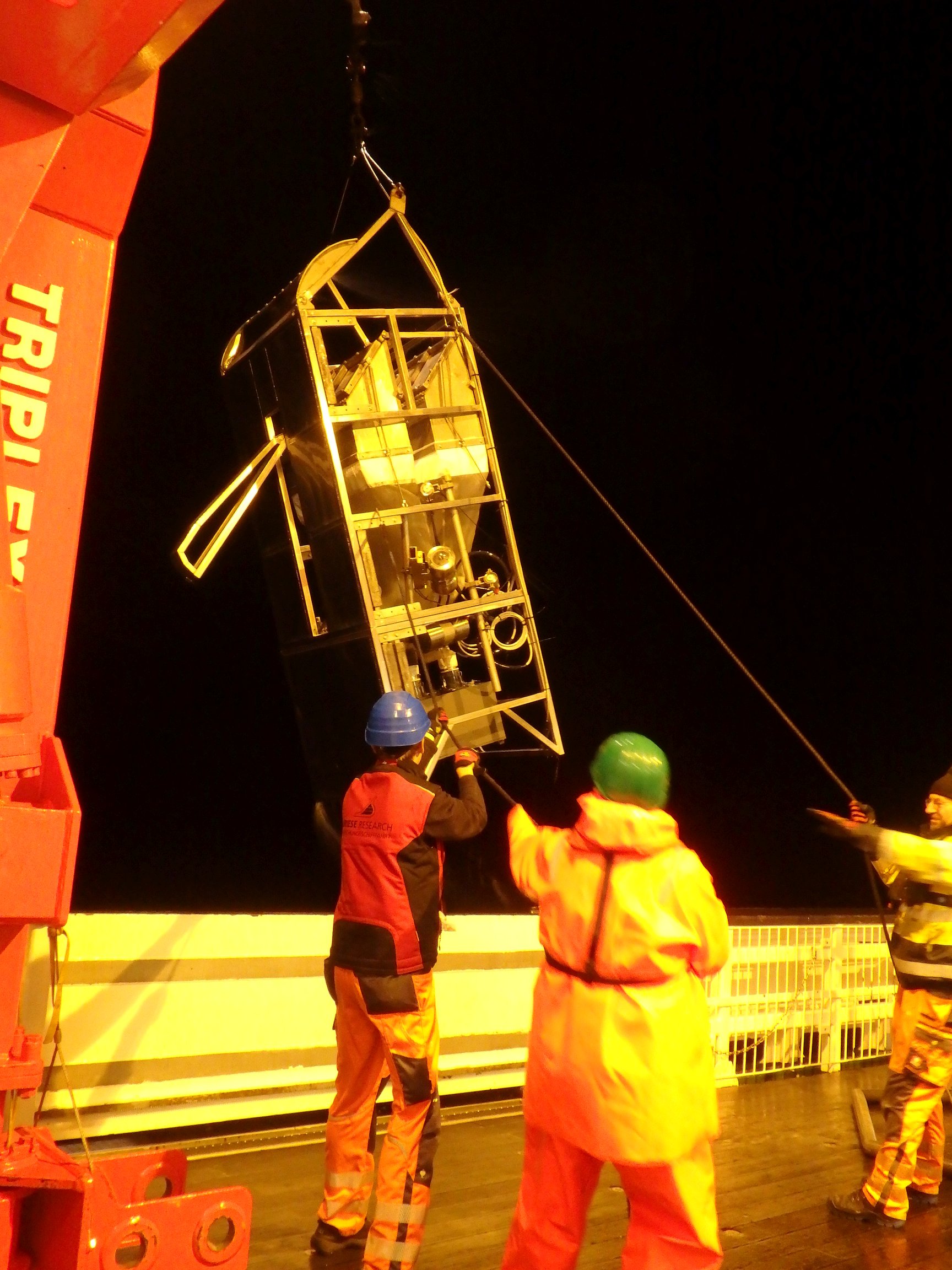EAT, SLEEP, EBS, REPEAT
The wind rustles outside, the shells on the windowsill rattle softly to the waves that gently move the ship back and forth. Henry, in the bunk above me, is already snoring away, and meanwhile I’m reflecting on the last few days. A lot has happened and the days are becoming a blur. My name is Andreas Kelch and I am a PhD student in deep-sea biology at the Senckenberg Research Institute and Natural History Museum in Frankfurt, Germany. On board, I am part of the Epibenthic Sledge (EBS) team. The EBS, to briefly explain again, is a large metal sledge with two superimposed nets that catch the organisms living above it while the sledge is being pulled along the seabed by the ship.
Two days back: it is shortly before 5 am, and I have been tried to sleep for a long time, but I am wide awake. On the ship, which never sleeps, there is always something going on somewhere. So I go downstairs, the CTD team is working right now, waiting for their gear to return from the depths of the sea. We play cards to make the time pass a little faster. The CTD is back in the hangar in time for breakfast. While the others get back to work, I go to breakfast. Looking out of the mess window, I think to myself that I still have to wait for the sunrise! So, after breakfast I go to the observation deck above the bridge and watch the sun rise out of the ocean – it’s beautiful! Filled with the peace of the beautiful morning and finally tired, I go to bed.
When I wake up again, I have slept half the day away, but that’s no big deal today, because the next EBS will be deployed at 2 am. Today, or rather tomorrow, is a special day, because I am supposed to “drive” the EBS myself for the first time. In the last few weeks, I was allowed to help Nils Brenke, the EBS operations manager, handle the EBS and look over his shoulder at the same time. He showed me how to calculate the towing distance, which parameters have to be considered for the selection of the course, and which steps have to be followed during the operation. So today is the dress rehearsal – I prepare and calculate everything and Nils drives, tomorrow I will drive and give the commands myself. The EBS goes into the water at half past two in the morning, and is back on deck just under five hours later, at a quarter to eight in the morning. Everything worked out as it should today! The EBS was good, there is comparatively little sediment in the nets and quite a lot of animals. Unfortunately, at first glance, there were very few isopods (which I work with, back home in Frankfurt) at this station. Tired from the long night, I quickly went to bed at 10 am.
Yesterday: Now it’s getting serious, Nils is staying in the background today. I take another look at the calculations and go to the bridge with Nils. Conveniently, I can take the calculations from the last EBS deployment, as we are at the same depth. On the bridge, about 3 hours before the EBS is to be deployed, we now discuss with the officer on watch what kind of weather we will have and what course is most favourable for the coming deployment. It will be sporty! A wind force of 7 to 8 is forecast, plus a wave height of 3 to 4 metres. But the crew has no major concerns that we won’t be able to do the mission because of the weather – so it goes ahead. Three hours later, at 7 pm, the EBS is in the water. Everything worked perfectly! Ingo, the man at the winch, has deployed the EBS perfectly between two big waves. Now we go back on the bridge, the wind freshens up as predicted and slowly the waves rise. I find it simply fascinating how RV SONNE steadily works its way through the waves at 3 metres and wind at Beaufort force 7 and still follows its course undisturbed! You can hear the engines pumping and working, but we sail straight ahead at a constant 1 knot on our course. At midnight, the entire EBS team is dressed in yellow and orange oilskins on the working deck – we are expecting the EBS back. The ship is laid slightly into the wind so that the working deck is more shielded from the wind and waves. At half past 12 the EBS arrives. By now we are well rehearsed, so the samples arrive quickly from the net in the lab. Unlike usual, we don’t work outside to sieve the samples, as the wind and waves continue to increase. The EBS is quickly cleaned up, “re-parked” and secured on deck with tension ropes. I am happy – everything worked out and the catch was good! Due to the weather, no more equipment will be used after the EBS. Earlier than planned, we now set off for the new station. For the EBS team it means relaxation, we now have a little more than 36 hours until the next deployment.
Today: A day without a deployment is behind us. We were able to relax a bit, catch up on sleep and maybe work a little less than usual in the lab. It’s evening now, I’m going to bed, and I’m sure I’ll be competing with Henry in 5 minutes to see who snores the best.
Good night from the other side of the world!
